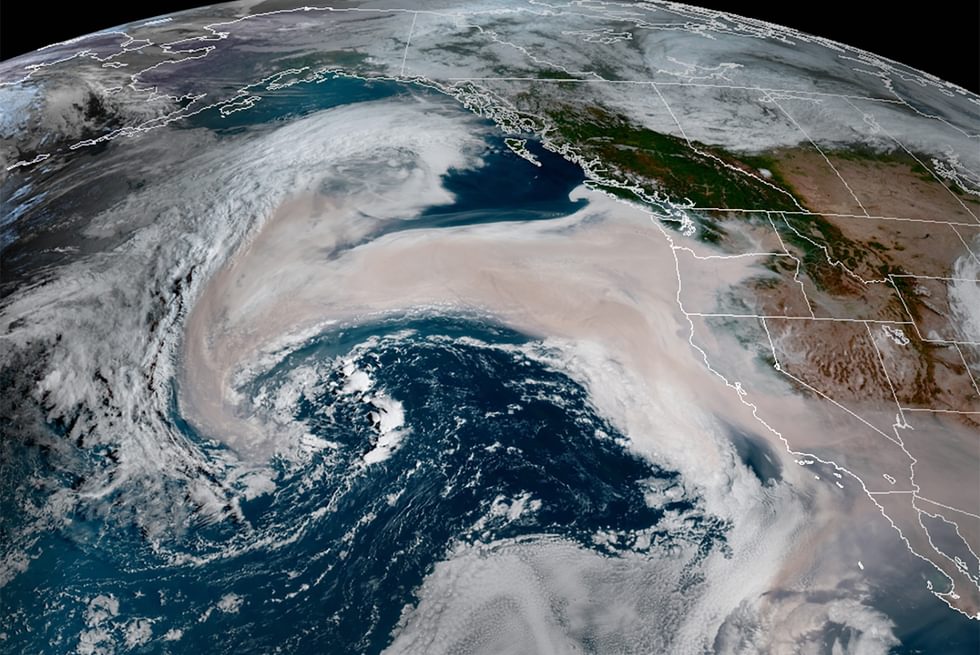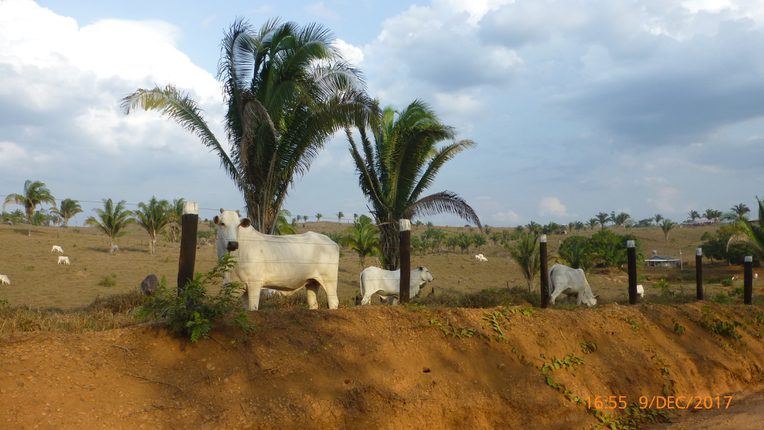Between Emptied Frontiers and Fungal Agroforests in the Brazilian Amazon
From the Series: Firestorm: Critical Approaches to Forest Death and Life
From the Series: Firestorm: Critical Approaches to Forest Death and Life

Frontiers in the Brazilian Amazon can be dull and even insipid places, ruins of ambitious development dreams. But that most dramatic and ancient land use technology—fire—is fundamental to their existence. Especially in this region, fire articulates property in all its alienating force (Campbell 2015; Campbell, this series). In 2017, I spent several weeks in the municipality of Apuí in the state of Amazonas, near the western outreach of the Transamazon highway. Vast swaths of charred land filled the landscape with surprisingly few cattle. Settlers here often lose money with livestock. While biologically resilient Nelore cattle help to consolidate property, more significantly, it is fire that channels belief about speculative accumulation, in a process that begins by emptying the landscape. And fire-born property—followed by imported Brachiaria grass and plodding hooves—removes the need for human labor while installing the animals as proxy authorities over the land.

Media outlets occasionally run stories implying that the poor burn down the forest in Brazil in order not to starve, that poverty drives destruction of the rain forest. But while poor migrant colonists may be involved in land speculation and deforestation, they tend not to be its arbiters nor its beneficiaries in the larger scope of things. One can visualize this political economy when one compares maps showing human population densities with maps showing deforestation and numbers of cattle. Some of the largest cattle herds are in the municipalities of São Felix de Xingu and Novo Progresso in Pará. With each municipality rivaling the size of smaller European countries, they respectively have human populations of 125,000 and 25,000. But they respectively harbor 2,400,000 and 650,000 head of cattle. In contrast, where more humans are concentrated, for example near Manaus, older river settled towns, or in the Amazon estuary around Belém, there is less fire and deforestation. Fires designed to secure property in the Brazilian Amazon are set by relatively few individuals at scales of hundreds to thousands of hectares at a time. These are not poor farmers trying to scratch out a living, and large-scale fires have little to do with growing food or crops per se. Rather than poverty, speculative outlooks and cynical politics impel this version of development.
Still, the majority of the Brazilian Amazon’s twenty-five million residents manage to avoid or at least transform such situations, including many migrant colonists. To take one example, a thousand kilometers to the east of Apuí, I had met a farmer named Monteiro. In 1977 he had migrated to the then recently opened Transamazon highway from the northeastern state of Piauí. Not at all the brusque figure one might associate with colonist settlement, tall and lithe he gestured with curling hands as if he were a tree himself. He had kept cattle for a decade before determining to quit cattle altogether and maintain polyculture agroforests and forest reserves. Monteiro, with others, had worked out a system of farming called roça sem queimar—planting without burning—to retain organic matter by avoiding fire. First, one opened up (broca) secondary forest regrowth (capoeira) in the form of alleys using sling blades, machetes, and chain saws. Then, a cover crop like castor bean or mucuna-preta was used to shade out the ground vegetation. The larger trees were kept standing. After a year, with the vines or shrubs having drowned out other plants, it was feasible to go back into the area and plant cacao trees, black pepper vines, or cupuaçu—along a narrow trail. Then, other trees were planted along with the main crops—especially mahogany, açai, copaiba, ipê, and Brazil nut.
Monteiro’s folk experiments were conducted in the midst of a municipality—Medicilândia, Pará—that now produces over fifty thousand tons of raw cacao seeds each year, roughly twice that of Mexico. Five hundred square kilometers of cacao agroforests spread along the Transamazon highway, supported by a dense pattern of land holdings and labor. Unlike the fires of land speculation, a fungal ecology underlies this tree-covered working landscape. Vassoura-de-bruxa, or witches’ broom disease, is the most threatening pest for cacao in Brazil. As if under a strange spell, disease-infected tree parts take on a characteristic writhing or otherwise deformed aspect. The fungus responsible for the disease, Moniliophthora perniciosa, is, like the cacao tree, native to Amazônia. However, pruning out witches’ broom from trees here effectively controls the disease because another endemic Amazon fungus, Trichoderma stromaticum, consumes M. perniciosa during the dry season. Any cacao farmer’s survival thus depends on manual pruning work. Farmers climb into the trees with machetes and use long pruning poles while on foot to cast infected tree branches, flowers, and fruit pods to the leaf-littered, fungal-replete soil.
I got to know this alternative smallholder and peasant landscape working alongside farmers pruning and harvesting. Rather than that grim cauldron of sun baked land in Apuí, here one worked in the shade, crunching over leaves in the understory galleries of immense jungle agroforests. Despite Monteiro’s work and the popular movements that had supported his and others’ experiments, fire was still the usual method to establish cacao. But compared with the fires of speculative frontiers, these fires were applied at a much smaller scale and only once, which encouraged regrowth and replanting of a diversity of species. In casting one’s eyes to the hilly horizons one could see how cacao orchards and agroforests interconnected with damp bottomlands rife with açai palms, motley patches of pasture, secondary regrowth, and remaining primary forest. Rather than speculation, I saw a world that had emerged from practical struggles involving labor, trees, and fungi in the landscape.
Campbell, Jeremy M. 2015. Conjuring Property: Speculation and Environmental Futures in the Brazilian Amazon. Seattle: University of Washington Press.